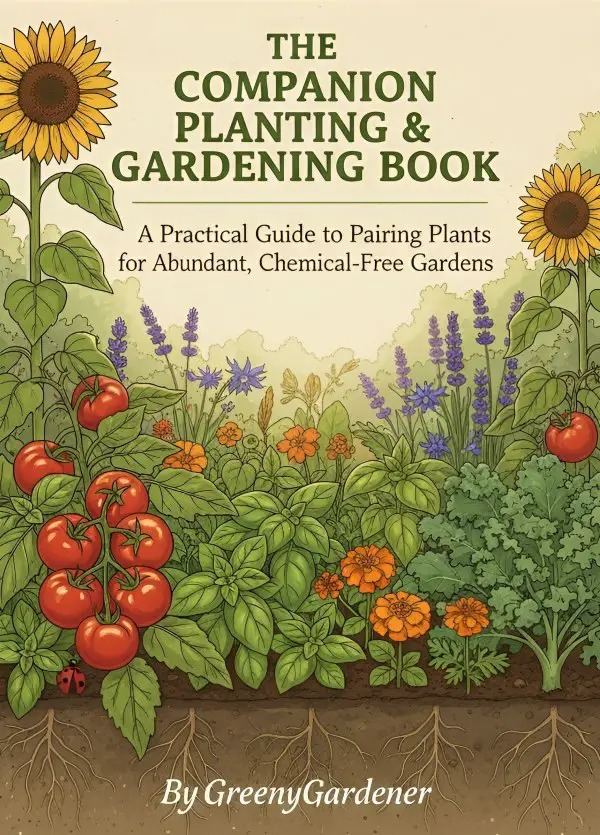Flowers That Mean Disappointment : Bitter Blooms of Heartbreak
Flowers that symbolize disappointment include yellow carnations and striped carnations. These flowers convey a sense of letdown and disillusionment.
When faced with disappointment, the language of flowers can provide a unique way to express emotions. Flowers have long been associated with symbolism and meanings, allowing individuals to communicate sentiments without words. While flowers are often used to convey joy and celebration, certain blooms are also linked with more somber emotions, such as disappointment.
Understanding the symbolism behind flowers that represent disappointment can offer insight into how to convey complex feelings through the universal language of nature. We will delve into the meanings behind various flowers associated with disappointment, exploring their significance and how they can be used in different contexts.
What's On the Page
- 1 The Language Of Flowers
- 2 Flowers Associated With Disappointment
- 3 Cultural And Symbolic Context
- 4 The Impact Of Flower Symbolism
- 5 Navigating Flower Symbolism Today
- 6 Understanding Emotions Through Flowers
- 7 Transforming Disappointment Through Floriculture
- 8 Appreciating The Beauty In Bitter Blooms
- 9 Frequently Asked Questions
- 10 Conclusion
The Language Of Flowers
Floriography, a historical practice, assigns meanings to various blooms and arrangements. In the Victorian era, people used these flower meanings to communicate messages, especially those that were too taboo to speak aloud.
The language of flowers is still relevant today, with many people using it to convey specific emotions or sentiments. Understanding the historical significance of flowers in expressing disappointment is important for recognizing their symbolic power.

🌿 The Companion Planting & Gardening Book (eBook)
Bigger harvests, fewer pests — natural pairings & simple layouts. $6.99
Get – $6.99
🪴 The Pest-Free Indoor Garden (eBook)
DIY sprays & soil tips for bug-free houseplants. $4.89
Get – $4.99Flowers Associated With Disappointment
Discover the symbolism of flowers associated with disappointment, such as the hydrangea and foxglove. These blooms convey feelings of heartache and letdown, providing a deeper insight into the language of flowers.
| Black Roses | Marigold | Begonia |
| Symbolize endings and farewell. | Represent grief and the sun. | Associated with caution and distaste. |
Cultural And Symbolic Context
Flowers have long been associated with a range of emotions, but not all flowers symbolize joy and happiness. In fact, some flowers are known to represent disappointment. Cultural and symbolic contexts play a significant role in understanding the meanings attributed to different flowers.
Literature and art have often depicted flowers associated with disillusionment and unfulfilled expectations. These representations reflect the universal experiences of human emotions. Regional perspectives also come into play when interpreting flower symbolism.
Certain cultures may assign negative meanings to flowers that carry positive connotations elsewhere. It is important to consider the cultural and symbolic background when understanding the disappointments associated with specific flowers.
Such interpretations vary across time, place, and artistic expression, illuminating the complexities of human experiences and the diverse interpretations we assign to flowers.
The Impact Of Flower Symbolism
Flower symbolism can convey deep meanings in various situations. Different flowers can express a range of emotions such as disappointment and sadness. Understanding the emotional connotations of flowers is essential for effective communication. Flowers play a significant role in social expression and can convey subtle messages subtly.
Flower symbolism can be tricky to navigate, especially when it comes to gift giving. While some flowers traditionally convey messages of love and happiness, there are those that carry a negative connotation, representing disappointment. These flowers may unintentionally send the wrong message if given as a gift.
To avoid any potential misunderstandings, it is essential to familiarize ourselves with the meanings behind different floral arrangements.
For instance, a bouquet of wilted roses may symbolize regret and sadness, while yellow chrysanthemums can be associated with unrequited love. By being aware of these symbolic meanings, we can make more informed choices when selecting flowers for someone.
It is also worth considering the recipient’s personal preferences and any cultural or regional significances attached to specific flowers. Different cultures and regions may attribute different symbols to the same flowers, so it is crucial to be mindful of these variations.
While flower symbolism can be complex, taking the time to understand the meanings behind different floral arrangements can help us avoid any unintentional disappointments and ensure our gift choices accurately convey our sentiments.
Understanding Emotions Through Flowers
Flowers hold significant value in symbolizing various emotions. They not only express joy and love, but can also convey a sense of disappointment and sadness. Understanding the therapeutic uses of flowers can deepen our emotional awareness and enhance our well-being.
Flowers have long been associated with emotional healing and mood enhancement. Their vibrant colors and pleasant fragrances can help uplift spirits and reduce stress levels.
Roses, for example, are often symbolically linked to love and passion, but they can also represent feelings of disappointment or heartache. Orchids, with their majestic beauty, are often associated with luxury and strength, but they can also symbolize a fleeting sense of disappointment or unrequited desires.
Understanding the deeper meanings behind flowers allows us to connect with our emotions on a profound level. By using the language of flowers, we can express and acknowledge our disappointments and gain a sense of peace and catharsis.
Transforming Disappointment Through Floriculture
Floriculture offers a unique and often overlooked opportunity to transform disappointment into something beautiful and therapeutic. Through the creation of healing gardens, individuals can find solace and relief from their emotional pain.
These gardens, carefully designed and nurtured, provide a safe space for reflection and growth. Symbolic planting plays a crucial role in this transformational process, as specific flowers are chosen for their deep meanings. For example, the delicate cherry blossom symbolizes the transient nature of life, teaching us to embrace change.
Similarly, the resilient sunflower represents resilience and optimism, reminding us that even in times of disappointment, there is still hope.
By cultivating these gardens, we cultivate a sense of self-discovery and healing. The act of tending to these plants allows us to reflect on our experiences and find new perspectives. Through floriculture, we can find solace and beauty in the face of disappointment, fostering personal growth and emotional well-being.
Appreciating The Beauty In Bitter Blooms
Flowers with negative meanings can also hold a unique beauty. They challenge our perspectives and remind us of resilience found in nature. Disappointment, after all, is an essential part of life. By appreciating the beauty in these blooms, we can learn valuable lessons of strength and perseverance.
Frequently Asked Questions
What Flower Symbolizes Suffering?
The marigold flower symbolizes suffering due to its association with pain and sorrow in many cultures.
Do Any Flowers Have Negative Meanings?
Yes, some flowers have negative meanings. For example, yellow carnations symbolize disappointment, while white lilies are associated with death. It’s essential to consider cultural context when giving flowers.
What Flower Represents Despair?
The flower that represents despair is the cypress flower. It symbolizes mourning and sorrow in various cultures.
What Flower Means Misfortune?
The cactus flower symbolizes misfortune. Cactus flowers are associated with difficulties and challenges in various cultures.
Conclusion
In essence, the meanings behind flowers are nuanced and varied. Picking the right bouquet matters. Understanding the subtle language of flowers can prevent misunderstandings. Embrace the beauty and meaning behind floral arrangements to convey the right message. So next time, choose your blooms wisely.
- Where Does Cucumber Grow On Plant – A Gardener’S Guide To Flowers, - November 3, 2025
- How To Boost Cucumber Plants For A Bumper Crop Of Crisp, Juicy Fruit - November 3, 2025
- Home Remedies For Cucumber Plants – Your Guide To A Thriving, Organic - November 3, 2025
